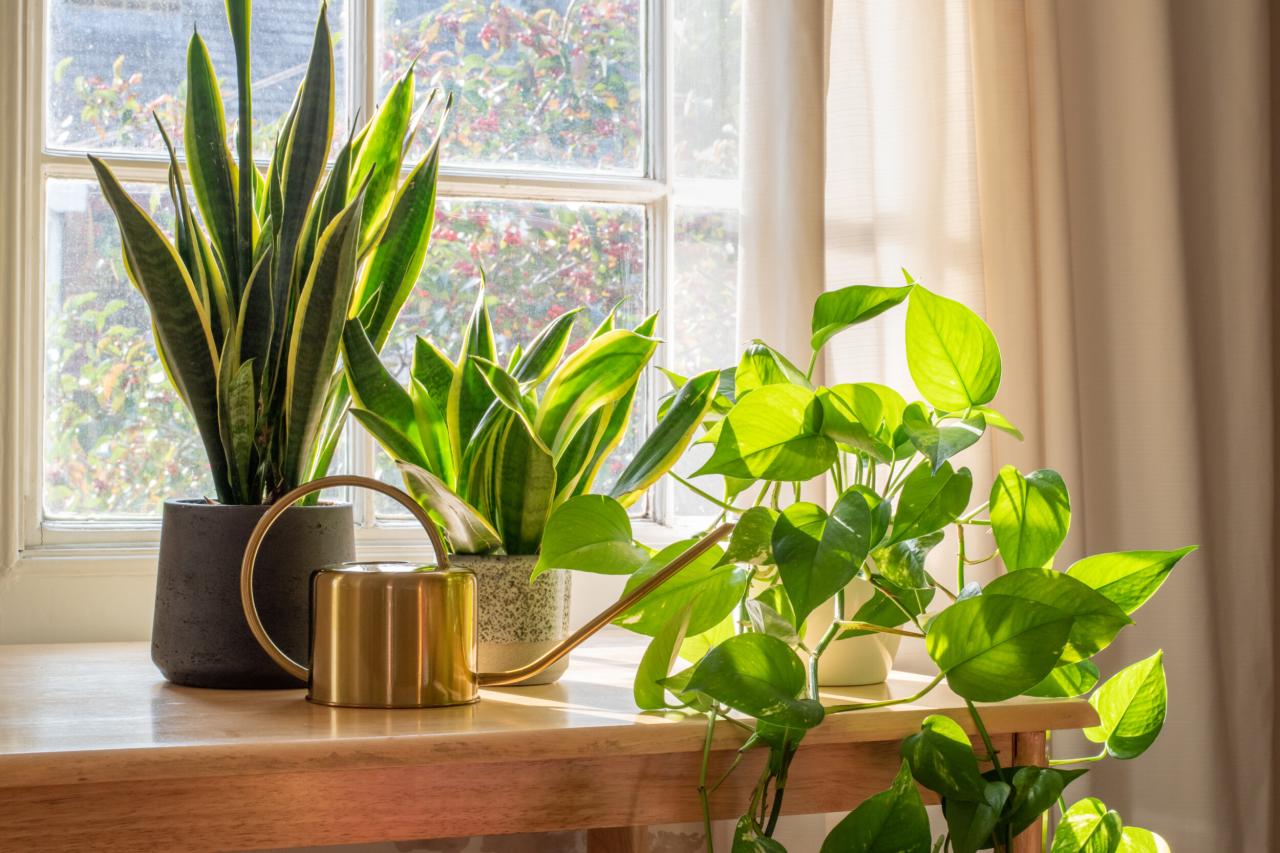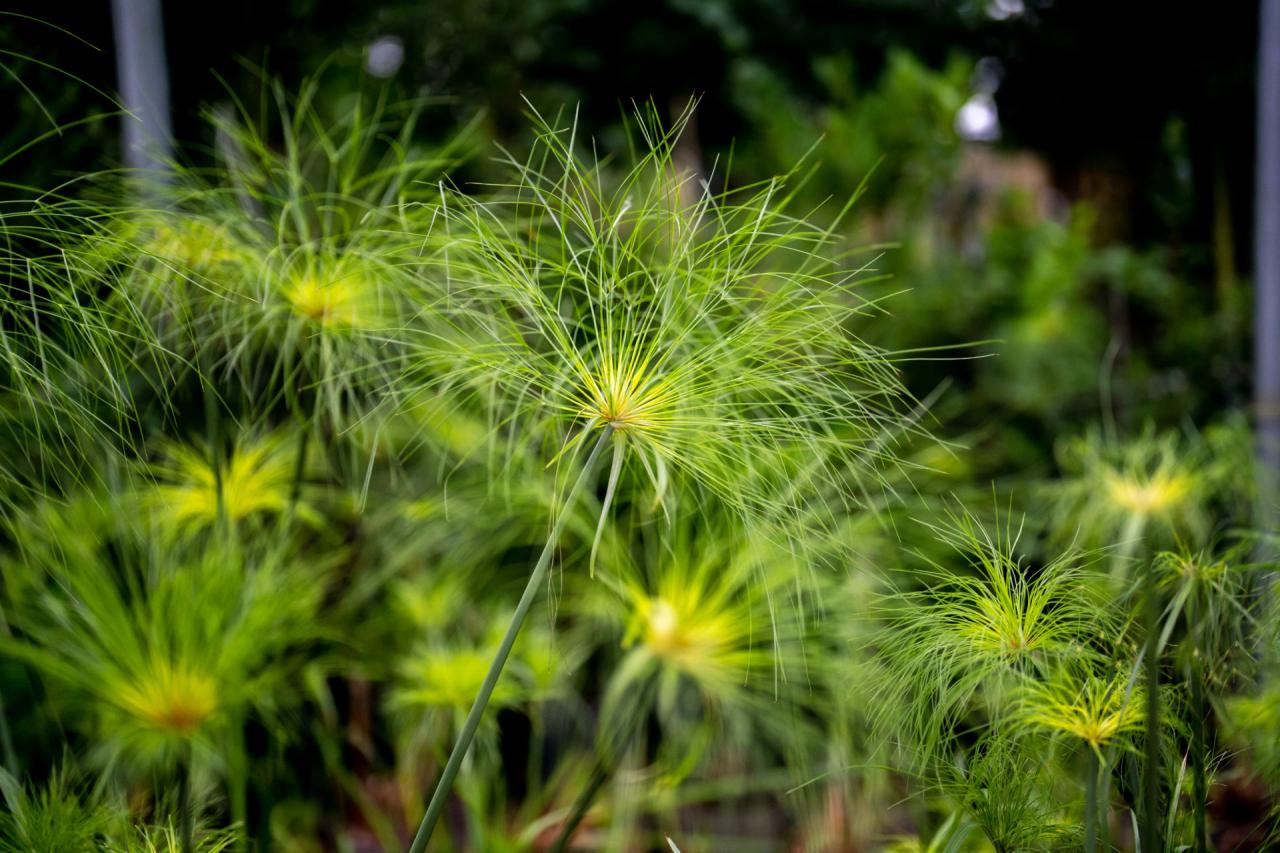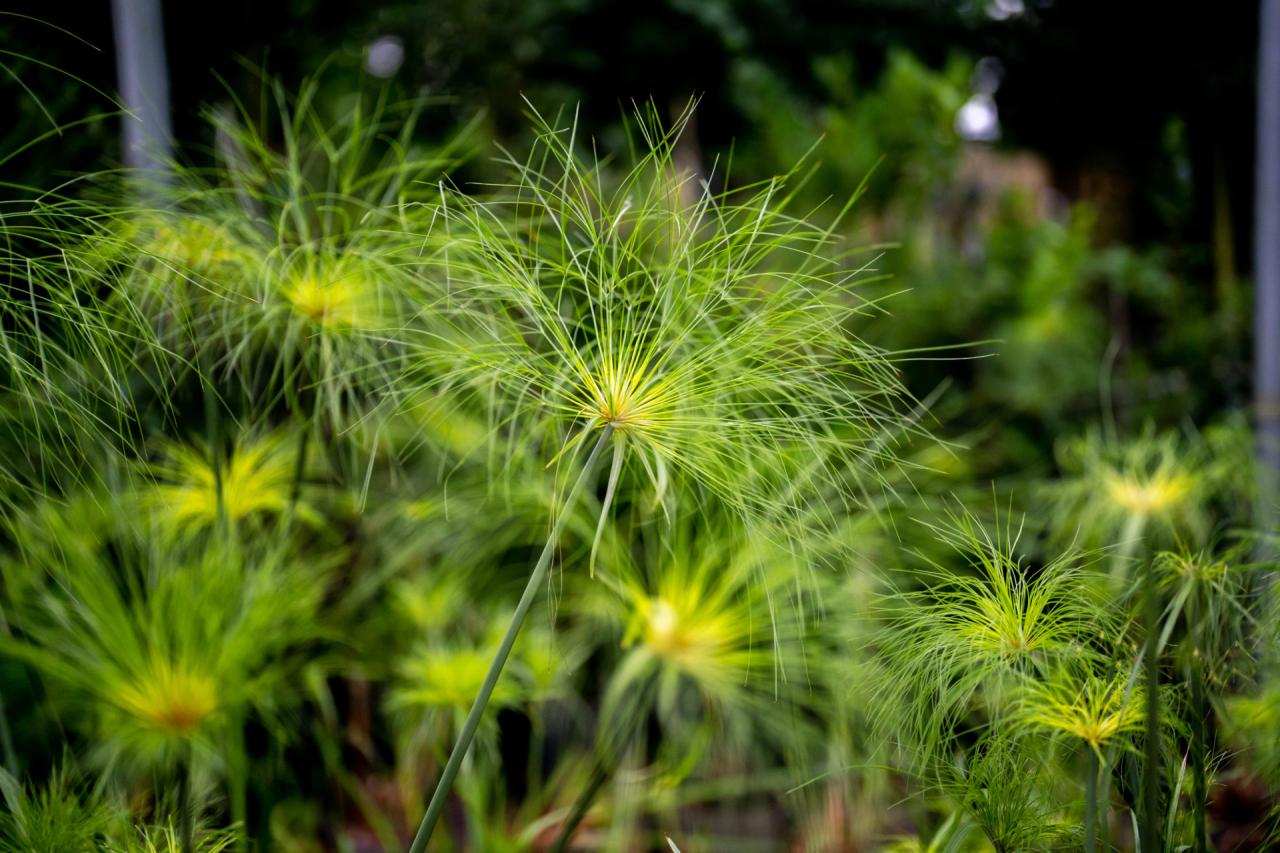How to Maintain a Thriving Papyrus Plant: Expert Tips for Garden Success – The papyrus plant, with its striking resemblance to ancient scrolls, is a captivating addition to any home or garden. These unique plants, historically significant for their use in ancient civilizations, can thrive in various environments with proper care.
This guide will delve into the fascinating world of papyrus plants, providing expert tips and techniques to ensure your papyrus flourishes.
From understanding their ideal growing conditions to mastering planting and propagation techniques, this comprehensive resource covers everything you need to know to cultivate a thriving papyrus plant. Learn about the importance of proper watering, fertilizing, and maintaining healthy growth.
Additionally, discover the fascinating process of harvesting papyrus stems for crafts and projects, bringing a touch of history and artistry to your home.
Introduction to Papyrus Plants
Papyrus plants, scientifically known asCyperus papyrus*, are tall, elegant aquatic perennials that have a rich history and unique characteristics. These plants, native to Africa, have been an integral part of ancient civilizations, particularly in Egypt, where they were used for a wide range of purposes, including paper production, construction materials, and even food.Papyrus plants have played a significant role in the development of ancient civilizations, particularly in Egypt.
Their versatility made them essential for various aspects of daily life.
Varieties of Papyrus Plants
Papyrus plants are known for their distinctive umbrella-shaped clusters of leaves, which grow from a thick, triangular stem. These plants are often referred to as “papyrus reeds” due to their resemblance to reeds. While
Cyperus papyrus* is the most common variety, several other species of papyrus plants exist, each with its unique characteristics.
The following is a list of some common varieties of papyrus plants:
- Cyperus papyrus:This is the most common and widely recognized variety, known for its tall, slender stems and large, umbrella-shaped clusters of leaves. It is the type of papyrus plant that was historically used in ancient Egypt for paper production and other purposes.
- Cyperus alternifolius:This variety is commonly known as “umbrella plant” or “umbrella sedge.” It is a smaller variety with a more compact growth habit. Its leaves are arranged in a whorled pattern, resembling an umbrella.
- Cyperus involucratus:This variety is known as “star sedge” or “umbrella palm.” It is a dwarf variety that typically grows to a height of 1 to 2 feet. Its leaves are arranged in a star-shaped pattern.
Ideal Growing Conditions for Papyrus: How To Maintain A Thriving Papyrus Plant: Expert Tips For Garden Success

Papyrus plants thrive in environments that mimic their natural habitat. Understanding their ideal growing conditions is crucial for maintaining their health and ensuring their vigorous growth. Providing the right combination of light, temperature, soil, and humidity will create an environment that encourages robust papyrus development.
Light Requirements for Papyrus Plants
Papyrus plants require ample sunlight to flourish. They are happiest in bright, indirect light conditions, similar to what they experience in their natural wetland habitats. Direct sunlight can scorch their leaves, especially during the hottest parts of the day. Ideally, position your papyrus plant in a location that receives at least six hours of indirect sunlight daily.
A south-facing window with a sheer curtain or a location with dappled shade from trees can be suitable options.
Temperature Preferences for Papyrus Growth, How to Maintain a Thriving Papyrus Plant: Expert Tips for Garden Success
Papyrus plants are tropical plants, and they prefer warm temperatures. The ideal temperature range for healthy growth is between 65°F and 85°F (18°C to 29°C). They can tolerate slightly cooler temperatures, but prolonged exposure to temperatures below 50°F (10°C) can damage the plant.
During the winter months, it is important to protect your papyrus plant from cold drafts and ensure that the temperature in its environment remains above the minimum threshold.
Soil and Drainage for Papyrus Plants
Papyrus plants thrive in moist, well-draining soil. They prefer a soil mix that is rich in organic matter and has good aeration. A good potting mix for papyrus plants should contain a combination of peat moss, perlite, and compost. This mixture provides the necessary nutrients, retains moisture, and ensures proper drainage.
It is important to avoid soils that are heavy and compact, as these can lead to root rot.
Importance of Humidity for Papyrus Plants
Papyrus plants are native to wetland environments and require high humidity levels to thrive. They prefer a humidity level of at least 60%. To increase humidity around your papyrus plant, you can group it with other plants, use a humidifier, or place a tray of water near the plant.
You can also mist the leaves regularly, but ensure that the water is not too cold, as this can shock the plant.
Planting and Propagation Techniques
Papyrus plants can be propagated through seeds or cuttings, or by dividing established plants. The best time for planting or propagating papyrus is during the warm months, when the weather is consistent and there is ample sunlight.
Just like understanding the ideal time for sowing grass seed, as outlined in this comprehensive guide on How to Achieve Lawn Success by Sowing Grass Seed at the Right Time , knowing the right conditions for your papyrus plant is crucial for its flourishing.
By providing ample sunlight, consistent moisture, and the correct soil type, you can ensure your papyrus plant thrives and adds a touch of tropical elegance to your garden.
Planting Papyrus Seeds
To plant papyrus seeds, start by filling a seed tray with a well-draining potting mix. Scatter the seeds evenly over the surface of the mix and lightly press them into the soil. Mist the seeds with water and cover the tray with a clear plastic dome or wrap.
This will create a humid environment that will help the seeds germinate. Place the tray in a warm, sunny location and keep the soil moist. The seeds should germinate within a few weeks. Once the seedlings have developed a few true leaves, they can be transplanted into individual pots.
Propagating Papyrus from Cuttings
Papyrus can also be propagated from stem cuttings. To take a cutting, use a sharp knife or pair of scissors to cut a section of stem that is about 6 inches long. Remove the leaves from the bottom 2 inches of the stem and dip the cut end into a rooting hormone powder or solution.
Plant the cutting in a pot filled with a well-draining potting mix. Keep the soil moist and the cutting in a warm, sunny location. The cutting should root within a few weeks.
Dividing Established Papyrus Plants
Established papyrus plants can be divided in the spring or early summer. To divide a papyrus plant, gently lift the plant out of its pot or from the ground. Use a sharp knife or shovel to divide the plant into two or more sections, each with its own root system.
Plant the divisions in individual pots or in the ground. Water the plants well and keep them in a warm, sunny location.
Watering and Fertilizing Papyrus Plants
Papyrus plants thrive in moist environments but require well-drained soil to prevent root rot. Proper watering and fertilization are essential for maintaining healthy growth.
Watering Papyrus Plants
The frequency of watering depends on factors such as the size of the plant, the type of soil, and the ambient temperature. A good rule of thumb is to allow the top inch of soil to dry out between waterings.
During the growing season (spring and summer), water more frequently, ensuring the soil is consistently moist. In winter, reduce watering as the plant’s growth slows down.
- Consistency is key: Avoid letting the soil completely dry out, as this can stress the plant and lead to leaf browning.
- Check for drainage: Make sure the pot has drainage holes to prevent waterlogging.
- Avoid overwatering: Overwatering is a common mistake that can lead to root rot and fungal infections. Symptoms of overwatering include yellowing leaves, wilting, and a musty smell.
Fertilizing Papyrus Plants
Papyrus plants benefit from regular fertilization, especially during the growing season. Use a balanced liquid fertilizer diluted to half strength every two to four weeks. Avoid over-fertilizing, as this can burn the roots and lead to leaf tip browning.
- Choose the right fertilizer: Select a balanced fertilizer with equal parts nitrogen, phosphorus, and potassium.
- Dilute the fertilizer: Always dilute the fertilizer to half strength to prevent root burn.
- Monitor the plant’s growth: Adjust the frequency of fertilization based on the plant’s growth rate.
Maintaining Healthy Papyrus Plants
Maintaining a papyrus plant’s health involves a few key practices that ensure its continued growth and vibrant appearance. Regular pruning and deadheading are essential for shaping the plant and encouraging new growth. Additionally, being aware of potential pests and diseases and implementing preventative measures will help safeguard your papyrus plant.
Common Pests and Diseases Affecting Papyrus Plants
Papyrus plants are generally resistant to pests and diseases, but they can still be susceptible to certain issues. Knowing the common culprits and implementing preventive measures can help you keep your papyrus plant healthy.
While caring for your papyrus plant, you might find yourself drawn to the world of culinary herbs. Perilla leaf, a popular Asian herb, offers a unique flavor profile that can elevate your dishes. Learn how to incorporate this versatile ingredient into your cooking by checking out How to Cook with Perilla Leaf: Essential Tips for Creating Amazing Dishes.
Once you’ve mastered the art of perilla, you’ll be ready to return to your papyrus plant with a renewed appreciation for the diversity of the natural world.
- Spider mites: These tiny pests feed on plant sap, causing yellowing and wilting of leaves. They can be identified by their fine webs on the underside of leaves.
- Mealybugs: These soft-bodied insects secrete a white, cottony substance, resembling flour, on leaves and stems. They can cause stunted growth and leaf discoloration.
- Scale insects: These insects are small and immobile, often appearing as brown or black bumps on stems and leaves. They suck sap from the plant, causing yellowing and leaf drop.
- Root rot: This fungal disease occurs when the soil is too wet, causing the roots to decay. Symptoms include wilting, yellowing leaves, and a foul odor from the soil.
- Leaf spot: This fungal disease causes brown or black spots on leaves, which can spread and cause defoliation.
Preventing and Treating Pests and Diseases
Prevention is key to maintaining a healthy papyrus plant. Here are some measures to minimize the risk of pests and diseases:
- Proper watering: Ensure the soil is well-draining and avoid overwatering. Allow the top inch of soil to dry out between waterings.
- Good air circulation: Papyrus plants thrive in well-ventilated areas. Avoid overcrowding and ensure adequate space around the plant for air to circulate.
- Regular inspection: Regularly check your papyrus plant for signs of pests or diseases. Early detection allows for prompt treatment.
- Quarantine new plants: Isolate new plants for a few weeks before introducing them to your collection to prevent the introduction of pests or diseases.
If you notice signs of pests or diseases, here are some treatment options:
- Insecticidal soap: This solution is effective against many common pests like spider mites, mealybugs, and scale insects. Apply it according to the manufacturer’s instructions.
- Neem oil: This natural oil is a safe and effective pest control option. It acts as a repellent and can also kill existing pests.
- Horticultural oil: This oil suffocates pests and can be used to treat a variety of insects, including mealybugs and scale insects.
- Fungicides: If you suspect a fungal disease, use a fungicide specifically formulated for papyrus plants. Follow the instructions on the label carefully.
Harvesting Papyrus for Crafts and Projects

Papyrus plants, with their tall, sturdy stems, have been used for centuries to create a wide range of crafts and projects. From ancient scrolls to contemporary art, papyrus offers a unique and versatile material for creative endeavors. Harvesting the stems is the first step in unlocking the potential of this remarkable plant.
Harvesting Papyrus Stems
Harvesting papyrus stems for crafting requires careful consideration to ensure both the plant’s health and the quality of the harvested material. It’s crucial to select stems that are mature and strong, typically those that are at least two years old.
The optimal time for harvesting is during the dry season when the stems are at their peak. To harvest, simply cut the stems at the base, leaving a portion of the plant intact to allow for regrowth. Avoid cutting too close to the ground, as this can damage the plant’s root system.
Preparing and Drying Papyrus Stems
Once harvested, the papyrus stems need to be prepared and dried to make them suitable for crafting. The process involves removing the outer layers of the stem to expose the inner pith, which is the fibrous material used for crafting.
This can be done by peeling the outer layers with a sharp knife or by scraping them away with a tool. After removing the outer layers, the stems are then dried to prevent decay and preserve their flexibility.
Drying can be achieved by hanging the stems in a well-ventilated area or by laying them flat on a surface in direct sunlight.
Examples of Papyrus Crafts
Papyrus has a long and rich history of use in crafting, spanning centuries and cultures. Here are some examples of traditional and contemporary crafts made with papyrus:
- Ancient Egyptian Scrolls:One of the most famous uses of papyrus is in the creation of scrolls, which were used to record ancient Egyptian texts, literature, and religious beliefs. The scrolls were made by layering thin strips of papyrus pith together, then pressing and drying them to form a sheet.
- Papermaking:Papyrus was used for papermaking in ancient Egypt, and this tradition continues today in some parts of the world. The process involves beating the papyrus pith into a pulp, then pressing it onto a mold to form a sheet of paper.
- Basketry and Weaving:Papyrus can be woven into baskets, mats, and other woven objects. The stems are split into thin strips and then woven together using traditional techniques.
- Contemporary Art:Papyrus is a popular material for contemporary art, used in a wide range of applications, from sculpture and installation art to painting and papermaking.
Final Conclusion
Cultivating a thriving papyrus plant is a rewarding experience, allowing you to connect with the rich history and unique beauty of these remarkable plants. By following the expert tips Artikeld in this guide, you can create a flourishing papyrus oasis in your home or garden, enjoying its captivating presence for years to come.
Whether you’re a seasoned gardener or a curious beginner, this guide provides the knowledge and confidence to successfully cultivate this fascinating plant.
FAQs
What are the most common pests that affect papyrus plants?
Papyrus plants are generally resistant to pests, but they can be susceptible to aphids, mealybugs, and spider mites. Regular inspection and appropriate treatment can help prevent infestations.
How often should I fertilize my papyrus plant?
Fertilize your papyrus plant every 2-4 weeks during the growing season (spring and summer) with a balanced liquid fertilizer diluted to half strength.
Can I grow papyrus plants outdoors in colder climates?
Papyrus plants are not cold-hardy and can only be grown outdoors in warm climates. In colder regions, they are best suited for indoor cultivation.
What is the best way to propagate papyrus plants?
Papyrus plants can be propagated through seed, cuttings, or division. Division is the easiest method, as it involves separating established plants into smaller clumps.
